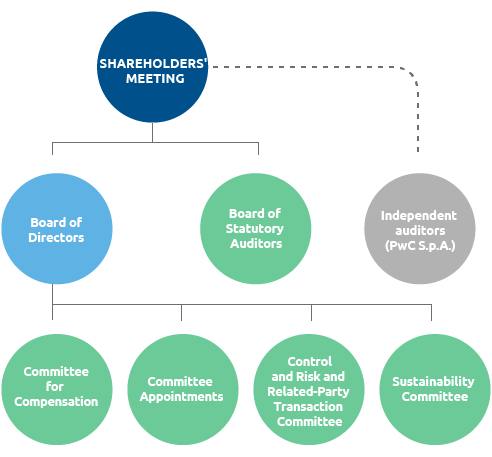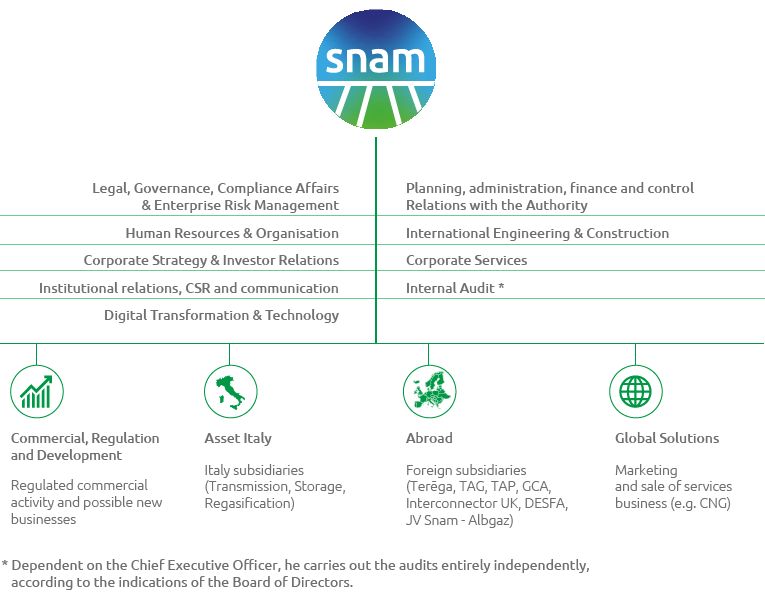Governance and organisation
Snam’s governance plays a crucial role in value creation dynamics. It helps to determine the conditions for the Company to interact properly and adequately with its reference environment, in particular by putting into practice the principles of integrity, transparency and compliance with internal and external rules, with the ultimate aim of reconciling the interests of our various stakeholders.
The governance system reflects the ‘traditional’ model and is developed in accordance with the applicable industry regulations (laws governing unbundling and listed companies), while also taking into account national and international best practice.

Snam’s Board of Directors
of the BoD is made up of independent directors
All the BoD
committees are chaired by
directors
of the BoD is
made up of women
The context that evolves and the consequent adjustment and evolution of the businesses provide the drive for change. In order to cope with these external stimuli and stay one step ahead, in accordance with the strategic plan, the last two years have seen the Snam group develop a long series of change programmes with the aim of making the organisation of the internal structures and processes more streamlined and efficient:
- optimisation and redesign of the processes with a view to assuring greater efficiency and continuous improvement;
- simplification and streamlining of the company regulations in order to streamline the actions in response to an ever more dynamic business;
- organisational structures that are more in line with purely organisational logics, with simpler, more flexible decision-making processes.
With reference to this latter point, in 2018 the TURN project was promoted on all Snam Corporate Staff departments and on the operating companies’ office departments. The TURN project worked to create a simpler organisation and quicker decision-making processes, thereby rationalising the number of units, eliminating 1 organisational level and 150 units.
Snam’s top priorities include supporting international development and new businesses. The company’s constant commitment to these matters has given rise to the integration of the following contexts:
- Infrastrutture Trasporto Gas - ITG, an investment that allows Snam to strengthen its infrastructures in Italy and put additional synergies to good use in the integrated management of the whole gas system;
- CuboGas and IES Biogas, respectively operators in vehicle methane gas refuelling and in the design, development and operation of biogas and biomethane production plants;
- TEP Energy Solution, an energy efficiency company whose mission is to foster decarbonisation and ensure the better use of energy.
It also increases the group’s international presence through the acquisition of DESFA, the Greek national gas transmission operator and the joint venture with Albgaz for the development of the gas market in Albania.
The Snam Organisational Model
